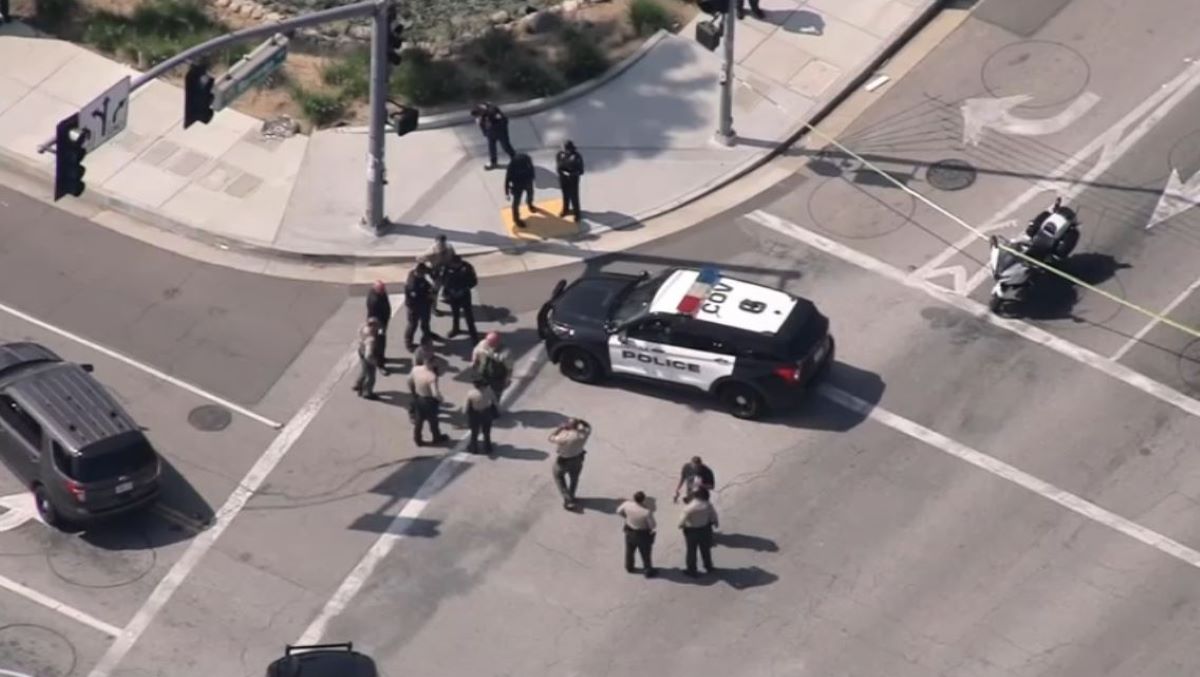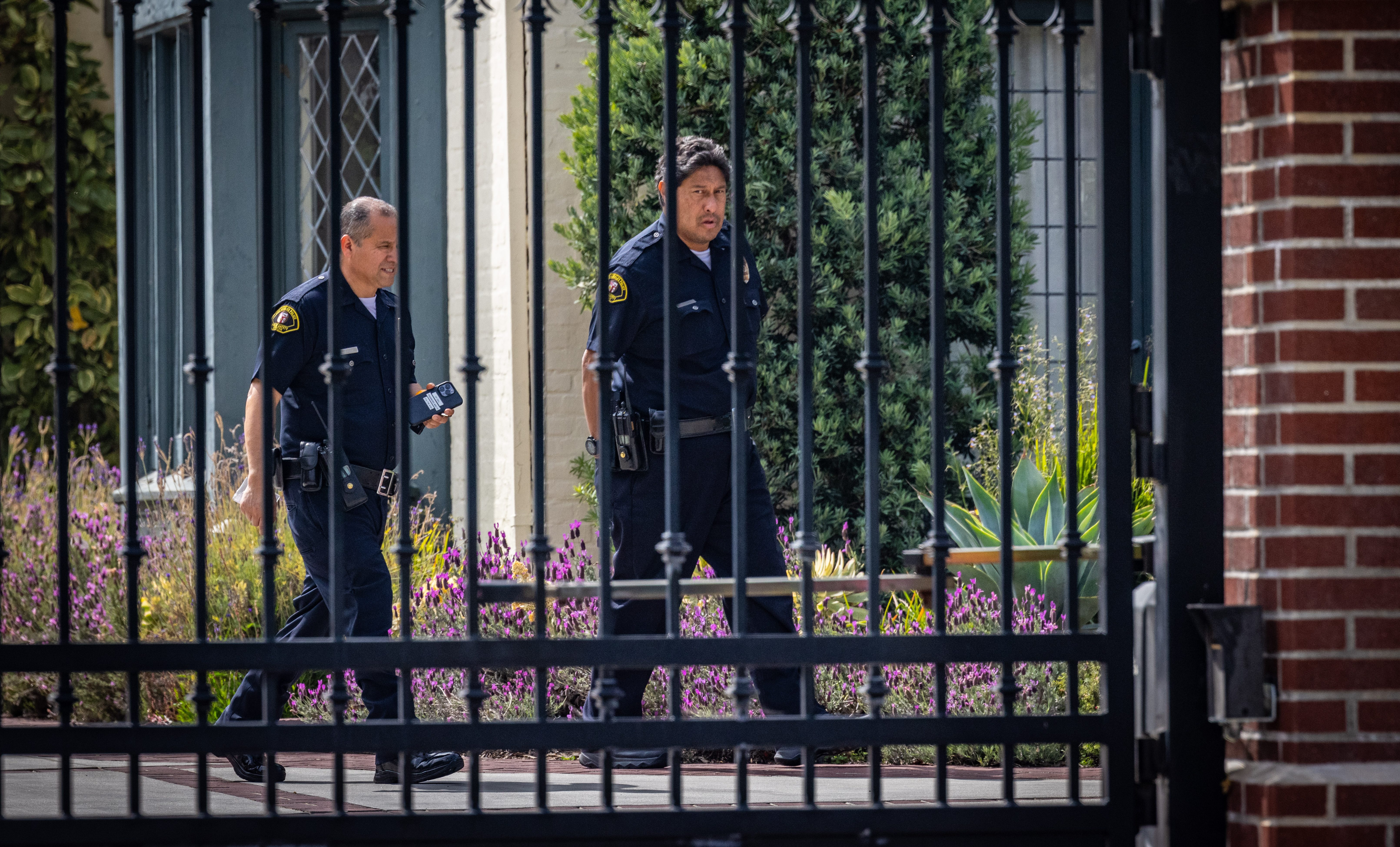Los Angeles Mayor Eric Garcetti released his proposed budget on Thursday for the 2018-19 fiscal year, which includes a significant boost of $800 million more than the 2017-18 fiscal year.
The new money in the $9.86 billion budget was fueled by a healthy economy, which led to a 5.6 percent increase in key tax revenue, as well as an influx of new revenue from Measure M, a county transportation measure approved by voters in 2016, and the statewide Senate Bill 1 or so-called "gas tax" for fixing roads, freeways and bridges.
"This year's budget is the most stable that we've had in years," Garcetti said during a news conference at City Hall.
The proposed budget includes an increase in the General Fund from $5.8 billion to $6.17 billion. When special funds are included, which is revenue that must be spent in certain ways, the overall budget increases from $9.2 billion to $9.86 billion.
With the increased revenue, the proposed budget at a glance does not appear to include cuts in areas that traditionally can cause blowback or controversy, while it also maintains or provides increases in key areas.
There is enough money to maintain the current staffing levels of the Los Angeles Police Department at more than 10,000 sworn officers; money to hire more firefighters; a boost for projects aimed at helping the homeless; more money for the mayor's Vision Zero road safety program; an extra $10 million for sidewalk repairs over the current budget; more resources for street repairs; and enough to keep the Reserve Fund above 5 percent with additions to the Budget Stabilization Fund.
"This budget is grounded firmly in our commitment to fiscal responsibility, first and foremost," Garcetti said.
News
Top news of the day
During his State of the City speech on Monday, Garcetti dubbed homelessness "the" issue facing Los Angeles, and the proposed budget reflects the urgency of the issue. The city saw a spike in homelessness last year by 20 percent, or about 34,000 people.
Garcetti proposed increasing funding for homeless programs from the current year's $178.5 million to more than $429 million, although more than half of the new spending would use funds from Measure HHH, a bond measure which Garcetti helped convince city voters to approve in 2016 and is expected to raise $1.2 billion over 10 years for permanent supportive housing construction.
HHH funds are not considered to be part of the city's $9.86 billion budget but are tracked separately along with other bond revenue. Garcetti's proposed non-HHH funding includes an increase from $90.8 million to $154.6 million, according to his office.
The 2017-18 budget deliberations by the City Council saw few public disagreements, but Vision Zero funding proved to be one of the sticking points.
At a news conference on Tuesday, Garcetti said he was proposing that the Vision Zero budget be increased to $91 million, but said today that he misspoke about those numbers -- although Vision Zero is getting a boost.
The budget for Vision Zero in the 2018-19 fiscal year, which aims to eliminate traffic deaths in the city by 2025 by making traffic safety improvements, is around $27 million. The Vision Zero plan centers around an identified series of streets, called the High Injury Network, which have a higher incidence of severe and fatal collisions. It prioritizes those streets for safety improvements.
According to Garcetti's office, the new budget includes $37 million for programs on the High Injury Network and $52 million in similar improvements on roads not on the high injury network. In the 2018-19 fiscal year, when adding up both High Injury Network and non-HIN work, the total came to $78 million.
The program, which has fallen short of a number of its goals so far, was started in 2015 but saw pedestrian deaths surge more that 80 percent in its first two years. It also failed in its goal to reduce overall traffic deaths by 20 percent by 2017.
During the previous fiscal year's budget meetings, Councilman Mike Bonin fought hard for the program's funding amid efforts by other council members to divert Vision Zero dollars toward more traditional street improvement projects. Some of the funding was coming from Measure M, which a few council members said was a program pitched to voters about fixing streets, not making advanced safety improvements. As a result, some council members said they were uncomfortable moving the money into Vision Zero.
However, Bonin and Councilman Paul Krekorian, who chairs the Budget and Finance Committee, struck a late deal that allowed for about $17 million in direct funding for the program by focusing on areas where Vision Zero and the more traditional improvement projects overlapped. The $17 million was in addition to about $9 million in Vision Zero funds that have been included in various departments' budgets, including the police department. The program only received $3 million in the 2016-17 budget.
With the overlap last year in how Vision Zero was budgeted, it is getting difficult to determine exactly how much is going directly toward the kind of safety projects the program says will reduce and eventually eliminate traffic deaths. The Department of Transportation has said that $80 million would be needed to meet the program's goals and timeline.
Bonin, who is chair of the Transportation Committee and also one of the biggest supporters of Vision Zero on the council, said he was pleased with the new funding levels for the program.
"I'm grateful to see that we are increasing our investments in Vision Zero, both on the High Injury Network and throughout the city of Los Angeles," Bonin said.
He added, "To me, Vision Zero is everything that we are doing to end severe or fatal collisions on our streets."
The budget includes $41 million for sidewalk repairs, which is above the current year's budget of $31 million and was the first down payment on a $1 billion program to fix all of the city's sidewalks over the next 30 years. The 30-year plan is part of a court settlement that was reached after disability advocates sued the city over the state of its sidewalks.
There is also a proposed increase from $131 million to $148 million for street maintenance, and a bump from $30 million to $73 million in street reconstruction, which is for severely damaged roads which need more serious work.
"The mayor has given us a solid budget proposal that addresses the primary issues Los Angeles faces today. I appreciate that he is affirmatively supporting the City Council's work by recommending increased funding to combat the homelessness crisis, more resources for critical sidewalk and street repairs, and expanded investment in public and traffic safety," said Councilman Paul Krekorian, who is chair of the Budget and Finance Committee.



